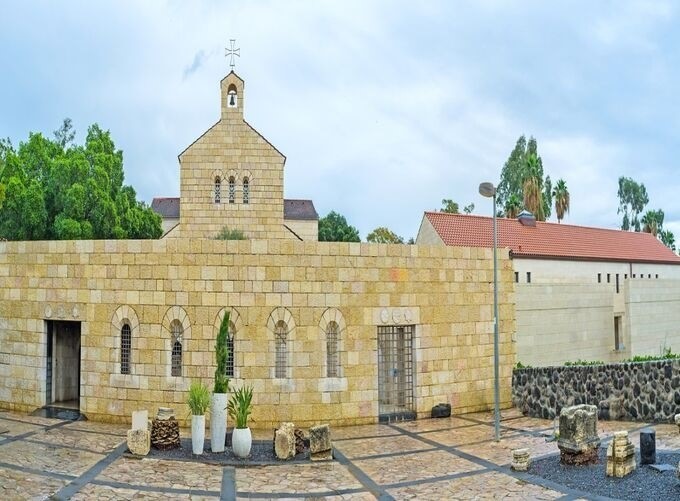
Israel Budget Travel: Cheapest Month to Visit
Traveling to Israel can be an incredible experience, but managing costs is a crucial aspect of planning a trip. Israel is a destination rich in history, culture, and natural beauty, attracting visitors year-round. However, the cost of visiting Israel can vary significantly depending on the time of year. This comprehensive guide will explore the factors affecting travel costs and identify the cheapest months to visit Israel, providing tips and insights to help you plan a budget-friendly trip to Israel.
Understanding the Cost of Travel in Israel
Traveling to Israel involves several costs, including flights, accommodation, food, transportation, and activities. Understanding the seasonal variations in these costs can help you determine the most affordable time to visit.
-
Flight Costs
Flights to Israel can be a significant part of your travel budget. Airfare prices fluctuate based on demand, seasonality, and booking time. Typically, flight prices are higher during peak travel seasons and holidays. The main international gateway to Israel is Ben Gurion International Airport (TLV), located near Tel Aviv.
-
Accommodation Costs
Accommodation prices in Israel vary based on location, type, and time of year. Major cities like Tel Aviv, Jerusalem, and Haifa, as well as popular tourist destinations in Israel such as Eilat and the Dead Sea, can be more expensive. Prices for hotels and vacation rentals often rise during peak seasons and holidays.
-
Food and Dining
Dining costs in Israel can range from affordable street food to high-end restaurants. The price of meals can vary depending on the location and type of restaurant. Eating out in tourist areas or high-end establishments will typically be more expensive.
-
Transportation
Transportation costs include local travel within Israel, such as public transportation, taxis, or car rentals. Costs can fluctuate based on the time of year, with potential discounts or higher rates depending on the season.
-
Activities and Attractions
Entrance fees to historical sites, museums, and other attractions can vary. Some sites offer discounts during off-peak seasons or have reduced rates for specific times.
Seasonal Variations in Travel Costs
Understanding the seasonal trends in travel costs can help you pinpoint the most affordable months to visit Israel.
-
High Season (June to August)
- Weather: Hot and dry, especially in the southern regions.
- Crowds: Peak tourist season with high visitor numbers.
- Costs: Flights, accommodation, and activities are at their highest.
Pros:
- Long daylight hours and numerous festivals.
- Ideal for beach vacations and outdoor activities.
Cons:
- High prices for flights and accommodation.
- Crowds at popular attractions and destinations.
-
Shoulder Season (April to May, September to October)
- Weather: Pleasant temperatures and fewer crowds compared to the high season.
- Costs: More affordable than peak season, but prices may still be higher compared to low season.
Pros:
- Comfortable weather for sightseeing and outdoor activities.
- Reduced crowds at popular attractions.
Cons:
- Prices can still be relatively high compared to the low season.
-
Low Season (November to March)
- Weather: Cooler temperatures, with potential rainfall. Weather varies by region.
- Crowds: Lower tourist numbers.
- Costs: Generally lower prices for flights, accommodation, and activities.
Pros:
- Significant cost savings on flights and accommodation.
- Fewer tourists, leading to a more relaxed experience.
Cons:
- Cooler weather, which may not be ideal for beach activities.
- Potential for rain and less predictable weather.
Best Months to Visit Israel for the Lowest Costs
-
November
- Weather: Mild temperatures, with some rain.
- Flights: Typically cheaper than during peak season.
- Accommodation: Lower prices compared to summer months.

Activities:
- Explore historical sites and museums.
- Enjoy outdoor activities in cooler weather.
Pros:
- Affordable flights and accommodation.
- Fewer tourists.
Cons:
- Potential for rain, particularly in the northern regions.
-
December
- Weather: Cooler temperatures, with increased likelihood of rain.
- Flights: Lower airfare prices, especially if booked in advance.
- Accommodation: Reduced rates in many areas.
Activities:
- Experience local festivals and holiday events.
- Explore cities and historical sites without the summer crowds.
Pros:
- Great deals on flights and accommodation.
- Unique holiday season experiences.
Cons:
- Cooler and wetter weather.
-
January
- Weather: Cooler temperatures and higher chances of rain.
- Flights: One of the cheapest months for flights.
- Accommodation: Lower prices due to low tourist numbers.
Activities:
- Visit historical sites and enjoy indoor attractions.
- Explore cities and cultural events.
Pros:
- Lowest airfare and accommodation prices of the year.
- Less crowded attractions.
Cons:
- Cooler, rainy weather.
-
February
- Weather: Similar to January, with cool and rainy conditions.
- Flights: Continuing low airfare rates.
- Accommodation: Affordable rates.
Activities:
- Explore archaeological sites and museums.
- Participate in local events and cultural activities.
Pros:
- Cost-effective travel options.
- Fewer tourists.
Cons:
- Cold and rainy weather, particularly in northern regions.
-
March
- Weather: Warming up with milder temperatures and reduced rainfall.
- Flights: Still relatively inexpensive compared to high season.
- Accommodation: Generally lower prices, though starting to rise towards the end of the month.
Activities:
- Enjoy the transition from winter to spring.
- Explore outdoor attractions and historical sites with improving weather.
Pros:
- Good balance of cost and improving weather.
- Fewer crowds.
Cons:
- Prices begin to increase as the high season approaches.
Tips for Saving Money When Traveling to Israel
- Book in Advance: Secure flights and accommodation early to take advantage of lower prices.
- Travel Off-Peak: Visit during the low season to benefit from reduced costs and fewer crowds.
- Use Public Transportation: Opt for public transit or car rentals over taxis to save on transportation costs.
- Explore Local Dining: Eat at local markets and affordable restaurants to manage food expenses.
- Look for Discounts: Check for discounts on attractions and tours, particularly during off-peak periods.
Best Time to Visit Israel on a Budget
Choosing the cheapest month to visit Israel can lead to significant savings on flights, accommodation, and activities. The low season months of November to March offer the most cost-effective options, with January and February being particularly budget-friendly. While the weather during these months can be cooler and wetter, the benefits of lower travel costs and fewer tourists can make for a rewarding and affordable trip. By planning your visit during these times, you can experience the rich history and vibrant culture of Israel while keeping your budget in check.



